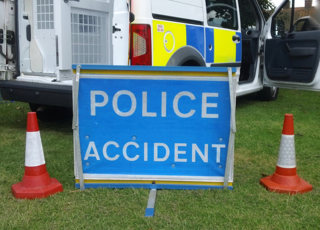An independent watchdog has found that roads policing has ‘been in decline for some years’ as the number of road deaths levels off with signs of an upturn.
According to Government figures, there were 1,905 road deaths in 2010, with provisional numbers showing this figure stood at 1,926 last year.
A newly-released report by HM Inspectorate of Constabulary and Fire & Rescue Services (HMICFRS), found that despite the high number of people killed on the roads in England and Wales each year, police and crime plans make little or no reference to roads policing.
It also found there has been less enforcement of drink-/drug-driving and not wearing seatbelts, with an increase in deaths attributed to these offences.
In response, the organisation's Roads Policing: Not Optional report has made a number of recommendations to encourage the police service to improve.
Matt Parr, HM Inspector of Constabulary, said: “Our inspection suggests that roads policing, despite the number of road deaths plateauing and likely to increase, is seen as less of a priority than it should be.
“We found that almost half of local crime plans didn’t include reference to roads policing.
“This, along with an unclear national strategy, is doing little to help reduce the number of deaths and life-changing accidents which occur on our roads.
“Spending on roads has been cut by 34% resulting in fewer officers dealing with offences that cause road deaths.
“However, there is a clear, and pressing, need for government, police and crime commissioners, chief officers and the College of Policing to recognise the importance of roads policing in reducing death on the roads.
“We have made recommendations to help the police improve the effectiveness of roads policing in England and Wales.
“In doing so, we are clear, roads policing is not optional.”
HMICFRS said roads policing has evolved from ‘traffic officers’ who were mainly focused on enforcement of road legislation, and dealing with road traffic collisions, to a wider concept of policing the roads.
This includes the use of roads policing resources to target criminals who use the road network for their criminal purpose.
The report found:
- Some good initiatives, but too often the effect of these was unclear due to a lack of analysis and evaluation
- When it was identified, good practice wasn’t shared across forces in an effective manner
- Support provided to national road safety campaigns wasn’t consistent, with adversely affected their effectiveness
- Too often officers hadn’t been given the appropriate training and support to allow them to carry out a critical role.
Neil Worth, chief executive of GEM Motoring Assist, added: “As the report’s title tells us, roads policing is not optional.
“It plays a vital role in reducing death, serious injury and crime on our road network, yet in recent years there have been drastic cuts to officer numbers and the resources available to them.
“It makes no sense that road collisions kill twice the number of people murdered each year, yet funding for roads policing has been cut by more than a third.
“We call on chief police officers to ensure they understand the key risks faced by road users in the areas they police, to make roads policing a key part of their police and crime plans and – as a priority - to reverse the 34% reduction in expenditure on roads policing that has occurred since 2012.
“Specifically, serious road offenders have been identified as much more likely to be involved in mainstream criminality, and it takes the skill and experience of a properly-trained traffic officer to detect and deter this group of road users.”
Separately, the Government has launched a review into roads policing to establish why the number of road casualties has plateaued since 2010.
As part of the Department for Transport review, it is exploring how it can better use intelligence to target dangerous behaviours, how technology can assist in enforcing road traffic law now and in the future and also how to better understand the value of enforcement in influencing road user behavior and the current enforcement capability.






















rosco7 - 20/07/2020 12:26
This is not really a surprise. Even anecdotally, it is obvious that traffic policing has been diluted to a point where some drivers can drive badly without any deterrent. The number of deaths increasing is a trend seen in nearly all countries, and the cause is distracted driving. Vehicles have continued to get safer. Most days you see evidence of distracted driving, and the police reliance on camera technology misses these offences. So the police only ever take action when a fatality occurs. Until we get level 5 autonomy, I am afraid we are going to see the death rates continue to rise. On another UK related issue, the roll out of Smart Motorways continues despite the evidence that they are both unsafe, and a major cause of anxiety when a breakdown occurs.